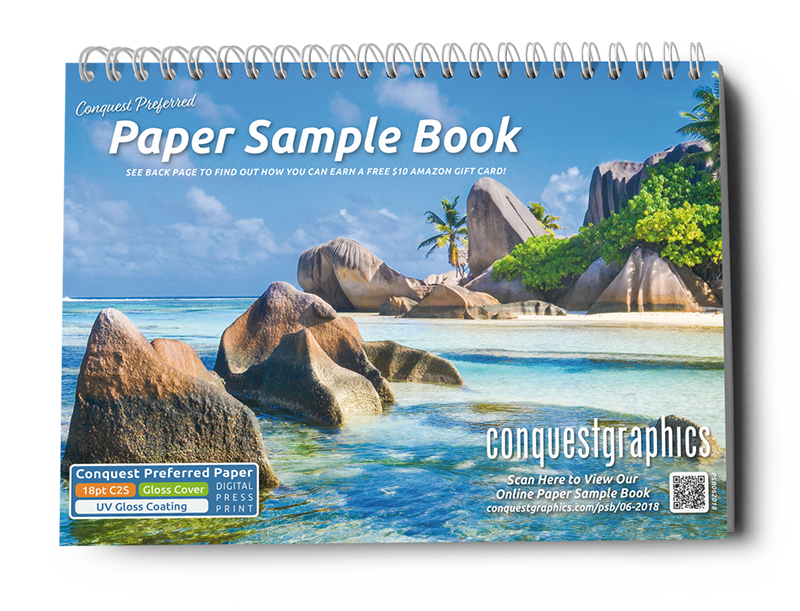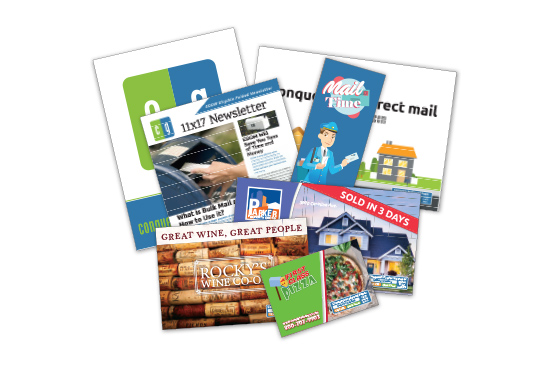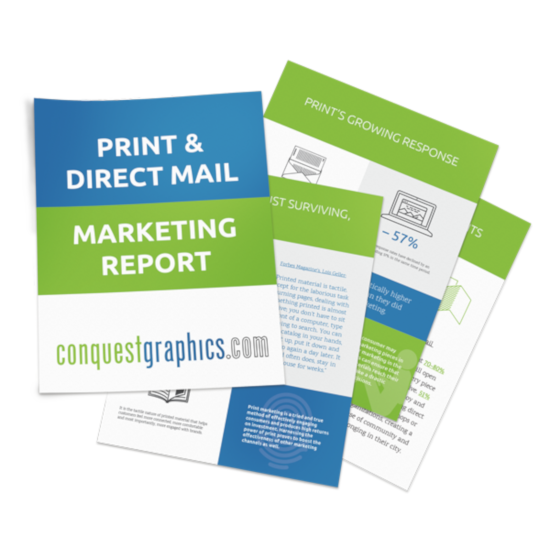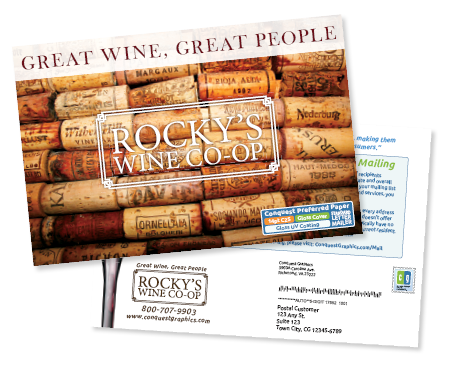A
AA
Authors Alterations. The term refers to changes (not corrections) made by a client during the production process. AA's are normally charged to a client as billable time.
Absolute Colorimetric
Absolute Colorimetric is a rendering intent that leaves colors that fall inside the destination gamut unchanged. It does not expand or compress the whole gamut. Each color is transformed into itself, if it exists in the destination gamut. Otherwise, it is transformed to the closest color at the gamut boundary. In short, out of gamut colors get clipped.
Absorbency
The capacity of paper to accept liquids like inks.
Acid-free paper
Paper which has had the acid removed from the pulp during production so that it has a neutral 7.0 pH.
Acquire Module
Software (created by a scanner manufacturer), that expands the capabilities of the Adobe Photoshop program.
Acrobat
Application software developed by Adobe to create PDF files. Acrobat Reader is used to read the PDF files.
Actual weight
The true weight of a given volume of paper used to determine price.
Additive Color
The additive primary colors are red, blue and green. These three additive colors represent the three main components of white light in the additive color model. Black is produced by the absence of the primary colors. In theory, any color can be created by mixing these three colors.
Additives
Additives are ingredients of paper such as clay fillers, sizing, dyes and other chemicals.
Adobe InDesign
An industry-standard page layout program from Adobe Systems.
Alias
When the curves and other lines in a graphic become jagged as a result of the resolution of the file being too low. The graphic is then referred to as "aliased".
Alignment
The align command is used to adjust the position of objects or text in relation to each other. The various ways objects or text can be aligned are typically left, right, center, top and bottom.
Alkaline paper
The preferred choice for books, maps and documents, alkaline paper is usually used where aging resistance is required.
Alpha
A fourth color component in the RGB color model that represents opacity. By changing Alpha values, images can be rendered completely transparent to completely opaque.
Alpha channel
Alpha channels are used to create and store masks. Masks enable you to isolate or protect parts of an image you want to apply changes to, be it color changes, filters, opacity to a certain area on an image, etc.
ALT-attribute
An attribute specified in the image tag (HTML). The alt attribute is used to specify the text that must be displayed while an image on a web site loads. The alt attribute also adds functionality where the user's browser does not display images or where images have been turned off.
Ambient light
Also known as "available light" or "existing light". It's the surrounding light within an environment.
Anchor point
Anchor points allows the user to manipulate paths to change its shape. It (anchor points) appears along a path at every curve of a path and at the beginning and end of a path. Anchor points do not print out.
Animated GIF
A very basic animated image, used primarily in web design. Animated GIFs consist of a set of GIF images placed in sequence.
Animation
A series of static images pieced together in a timed sequence to give the appearance of continuous movement.
Anti-alias
Softening of the jagged edges in images that have become aliased.
Aqueous coating
Aqueous Coating is a water-based coating applied after printing. It helps the underlying ink from rubbing off. Such a coating can give a gloss, dull, or matte finish. It can be applied while the paper is still on press, or after it's off press.
Archival paper
Archival paper is typically acid-free and has a quality lifetime of about 100 years or longer. This paper is used to keep critical records for many years.
Archiving data
To archive data means to store pieces of information for long periods of time.
Art Director
The person responsible for managing the creative and production process for a given project as well as the people working on the project.
Auto trace
A function in graphic design software that automatically traces images. Paths are created along the edges of a scanned sketch. The paths are then cleaned up and the scanned file is discarded. Now you have an outlined sketch of the image you scanned.
B
Backing-up data
The act of safeguarding your work against equipment malfunction. Data can be backed-up (copied) on various storage mediums like external drives, storage tapes, and compact disks.
Banner
Banners are graphic images created to be placed as advertisements for products on websites.
Bevel
Bevel is a function in graphic design software that, when applied to an image, gives the image the appearance of being raised out of the surface. A common example is buttons on websites. The appearance of the bevel is created by the application of lighter and darker colors to the image.
Bezier
The Bezier (or Pen) tool draws curved line segments that can be reshaped by changing its anchor points and/or direction lines.
Bitmap
Bitmap images are resolution dependent, unlike vector graphics which are resolution independent. A bitmap does not need to contain a bit of color-coded information for each pixel on every row. It only needs to contain information indicating a new color as the display scans along a row. This means that an image with much solid color will tend to require a small bitmap.
Bleed
When an image or printed color extends beyond the trimmed edge of a page, it is called a "bleed". Bleed ensures that the printed image extends to the edges of the paper. The paper is usually trimmed to the desired size after printing.
Brightness
The relative lightness or darkness of an image, the intensity of a light source, or color luminance.
Burn
A tool used (in Adobe Photoshop) to darken an area of an image.
C
Canvas size
The full area of an image.
Cartoon logo
Typically a logo where a cartoon character - like a dog, robot etc. - is developed as a mascot. The mascot character is then combined with a rendering of the company name and slogan to create a cartoon logo. Cartoon logos can also be made up of nothing but text, presented in a "cartoonish" way.
Cast shadow
Similar to a drop shadow but with added perspective to create the illusion of a third dimension.
Clipping path
A function that allows a shape to mask part of an image. The masked part of the image can be edited but won't let you work past the borders of the clipping path.
Cloning pixels
A function in image editing software such as Photoshop that can copy a part of the image and place it elsewhere. It can be used to remove blemishes on a models skin, text on a scanned image etc.
CMYK
CMYK stands for Cyan, Magenta, Yellow and Black, the four subtractive primary colors in the process color model.
Color cast
A color cast changes the hue of a selected part (or the whole) of an image while keeping the saturation and brightness intact.
Color correction
Correction to a color cast created by the scanner on the scanned image. The preview image on the computer display is adjusted. Color correction is usually done in CMYK.
Color map (color palette)
A display of all the colors available in a computer program.
Color model
A system used to describe and reproduce color.
Color palette
A set of colors that make up an image, animation, or electronic document. It is also the set of colors available to be applied to images.
Color space
Color space is a particular way to describe color. Examples of color spaces include: RGB, CMYK, HSB, CIE LAB.
Colorcurve system
The colorcurve system addresses the tendency of some colors to appear different on a variety of surfaces, materials and in different lighting conditions. The system is based on light reflectance curves and not on colorant formulations.
Colorfastness
If something is colorfast the color won't run when it gets wet and it won't fade in sun/bright light.
Comp (comprehensive)
Comp's are created to see what a prospective design project will look like. Paramenters such as layout of the image, use of color, the size and the paper that will be used. It is also sometimes called a dummy.
Composite image
A composite image is a graphic image (or photograph), made up of a combination of images.
Compound path
Illustration software enables users to create compound paths from two or more paths. A compound path is an image with a see-through hole in the middle. An example of a compound path is the shape of the letter "A". If you put an "A" or any image with a compound path onto a colored background, the background color shows through.
Construction logos
Logos created specifically for construction companies.
Continuous tone
Black and white photographs and photographic images often contain gradient tones from black to white which are called continuous tones.
Contrast
The difference between light and dark areas in an image. Also describes the dynamic range of an image. The wider the tonal range is in an image, the lower the contrast will be.
Control handle
The handle that extends from an anchor point that is used to create curved shapes in a path. Stretching the control handle will change the depth of the curve.
Crop
A tool that enables the user to trim away the edges or part of an image.
D
Density
The higher the density of an image, the greater the opacity. The lower the density, the more transparent the image is.
Dither
The mixing of adjacent pixels to simulate additional colors to fill the gaps between two colors. For instance, if one wants to display a full color graphic on a 256-color monitor, the computer will simulate the colors it cannot display. If there is a part in an image that displays incorrectly because a red and a yellow pixel are lying next to each other, creating a definite line from a distance, dithering would put an orange pixel in between to smooth out the line and the colors.
Device-dependent color space
A color space where the same color will display differently on different devices. Scanner RGB and display RGB, for example, will display the same RGB color value differently.
Dodge
To lighten a part or the whole of an image.
DPI (dots per inch)
DPI is the number of dots (or pixels - PPI) that fit horizontally and vertically into a one-inch measure. The more dots per inch, the more detail is captured and the sharper the image will appear.
Drop shadow
Similar to a cast shadow but without added perspective to create the illusion of a third dimension.
Dummy
A dummy counts as an example of a piece of design work (brochure, ad, book cover etc.) that needs to be approved by the client. Once the client approves the dummy, the final design is completed and printed.
Duotone
Duotones are made by printing an image with two colors, usually black and a second color. The resulting image has more depth than it would have had with only a monotone color (generally black ink on white paper).
E
Emboss
Using an embossing effect on an image gives it a three dimensional (3-D) quality. The 3-D effect is created with highlights and shadows on the edges of the image.
Export
Exporting allows the user to save a file in another format or to be opened in other programs.
F
Feathering
A graphic software tool used to make the edges of an image appear blurry.
Fill
A graphic software tool used to fill selected parts of images or their backgrounds with a color.
Filter
A filter is applied to images to create special effects or to achieve a look that would be too difficult to create manually.
Flash
Vector graphic animation software from Adobe that creates browser-independent graphics (graphics that look the same across all browsers). An advantage of Flash animation is that its download times are relatively fast.
Focaltone
A color matching system used for specifying process color.
Font
A font is a complete set of characters in a particular typestyle and typically consists of a full letter set, number set, and all other special characters you get by pressing the shift, control or option keys. Examples of fonts include "Arial", "Courier New", etc.
Foreground color
Color applied to objects in the foreground of the layout.
Format text
Format text is a function available in most page layout programs, allowing the user to change fonts and point sizes of all copy elements.
Four-color process
The printing process that reproduces colors by combining, cyan, magenta, yellow, and black. The printed image consists of dots in these four colors. These dots are printed on top of each other, next to each other or just close to each other, depending on the color and tonal values wanted.
Freehand drawing tool
A tool found in illustration software allowing the user to draw freeform shapes as if with a pen.
G
Gamma
An adjustment that makes the tonal distribution lighter or darker. Gamma adjustments are made to monitors, scanners, or during an image editing process.
Gamut
Gamut is the range of available color on a device. Each device has its own gamut capabilities. If a color is out of that particular devices range, it is shown inaccurately on the display or cannot be printed accurately. We then say that color is "out of gamut".
Gamut transformation
A function of Color Management Systems that converts out of gamut colors to colors within the gamut of the targeted device.
Get picture command
A command in Quark Xpress that imports a file into a picture frame.
Get text command
A command in Quark Xpress that imports a text file into a text frame.
GIF (Graphics Interchange Format)
GIF images display up to 256 colors. GIF images generally have very small file sizes and are the most widely used graphic format on the web. The low quality resulting from compression makes them unsuitable for professional-quality printing.
Gradient
A function in graphic arts software that allows the user to fill an object/image with a smooth transition of colors, for example a dark blue, gradually becoming lighter or red, gradually becoming orange, then yellow. Also called a Blend.
Graphic background
In web page design, some pages are designed with a graphic background on the web page and the text on top of the graphic. In some cases the graphic background can make the text difficult to read.
Graphic design
Visual representation of an idea or concept. The term is used as a collective name for all activities relating to visual design, including web design, logo design etc.
Grayscale
Grayscale images contain black, white, no color, and up to 256 shades of gray.
H
Hexadecimal
Hexadecimal describes a numbering system containing 16 sequential numbers as base units.
High-resolution image
A pixel-dense image with a high level of sharpness and clarity. High-resolution images are generally suitable for professional quality printing.
HLS
A color space described by varying values of hue, lightness, and saturation.
HSB
A color space described by varying values of hue, saturation, and brightness.
Hue
Hue is the actual color of an object. Hue is measured as a pure color (on the color wheel) in degrees, for example degrees and variations of blue which define a green-blue or sea-blue up to a purple-blue.
I
Image assembly
The process of creating a hybrid image constructed from parts of other images.
Image map
An image map is a single graphic image on a website that contains multiple clickable hyperlinks.
Invert
To reverse the tonal values or colors of an image. On an inverted image, black becomes white, blue becomes orange, etc.
J
JPEG (Joint Photographic Electronic Group)
A common compression method that reduces a file's storage size by discarding non-critical picture detail. Excessive JPEG compression can cause poor image quality.
K
Kerning
Adjusting the lateral or horizontal space between letters.
L
Layers
A function of graphic arts software that allows the user to assemble, organize, and re-edit their artwork.
Leading
The vertical spacing (measured in points) between lines of text.
Letter spacing
See kerning.
Lightness
The lightness or brightness of a color.
Line weight
Line weight is a term referring to the thickness of a printing line. Sometimes shapes are drawn with a line weight of zero and then the fill color is used to define the shape.
Logos
Are unique visual business identifiers. A logo is an image that acts like a business signature, identifying the company and differentiating it from the competition. Although not a requirement, many logos illustrate the nature of the business and/or the nature of its products/services.
Lossless
Refers to a form of data compression where the detail is retained and no data is lost after file downsizing. Lossless compression methods are commonly used with TIFF and GIF formats.
Lossy
A form of data compression where detail is removed as the file size are reduced. A common lossy compression method is JPEG.
Low-resolution image
A low-resolution image is a low-detail image file that lacks sufficient detail for professional quality printing. Low-resolution images are frequently employed in website designs.
Luminosity
The brightness of an area that is determined by the amount of light it reflects or emits.
LZW (Lemple-Zif-Welch)
A useful lossless compression technique that compress images that contain large areas of single color, for example screenshots. This technique is supported by TIFF, GIF, and PDF file formats.
M
Magic wand tool
A tool in graphic software that allows the user to select parts of an image, for example areas with the same color.
Margins
Guidelines in page layout software to show the user the body copy areas. It also allows the user to specify the body copy dimensions. Margins/guidelines do not print.
Mask
See clipping path.
Master page
A feature found in page layout software that allows the user to create a repeatable page layout. Elements like page numbers are created once on a master page. This allows the user to avoid adding the numbers to successive pages manually.
Medical logos
Logos created specifically for use within the medical industry. The term is used to refer to hospital logos, clinic logos, and healthcare logos in general.
Monitor RGB
The working space that reflects the current color profile of a monitor.
Mouseover
A web graphics special effect that initiates some other action, such as a color change, or a pop-up window when you place your cursor over it. Also called a Rollover.
Multimedia
Multimedia is a form of communication that combines text, still or moving images, sound, etc.
N
Neon glow
A visual effect in graphic arts software that gives a graphic image the appearance of neon lighting.
Noise
Noise is a term used to describe pixels that contain random colors.
Non-printing guides
Non-printing guides are alignment tools such as rulers or margin guides found within graphic arts programs.
Non-reproducible colors
Non-reproducible colors are colors within an image that fall outside of the gamut of some given device.
O
Object
Objects are discrete components of a larger or more complex image. In graphic design, images can be created by grouping objects together.
Opacity
The density or tonal value of a color. The opacity of an image or object can range from transparent (0% opacity) to opaque (100% opacity).
Outline
The outline is the outermost edge of text or a graphic.
P
Page layout
Examples of a page layout are the pages in magazines or brochures. Page layouts are created by placing objects (text, images, pictures, etc.) on a page. The whole design of a single page in a magazine is a page layout.
Page size
A setting in graphic arts software that enables the user to define the size of the page being created.
Pantone Matching System (PMS)
The Pantone Matching System is used for specifying and blending matched colors.
Paste board
A paste board is the area around a page surface in a page layout program. This area allows the user to temporarily store elements that will be used in the page layout.
Path
A path is the shape of a single element in an illustration. A path will not be visible unless it has a fill or line weight assigned to it.
Patterned fill
In illustration programs, a custom fill is usually defined by the user.
Pixel
In computer graphics, a pixel is the smallest picture element that can be independently assigned a color and color level.
PNG
Portable Network Graphics format. PNG (usually pronounced "ping") is used for lossless compression. The PNG format displays images without jagged edges while keeping file sizes relatively small, making them popular for web design uses.
Posterize
An effect in graphic arts software that reduces the number of shades of gray or colors to a specified number.
PPI
Pixels Per Inch. A expression of the resolution of a continuous tone image. Bascially the same as DPI.
Primary colors
The primary colors are combined to produce a full range of other colors (non-primary colors), within a color model. The primary colors for the additive color model are Red, Green, and Blue. The primary colors for the subtractive color model are Cyan, Magenta, and Yellow.
Printable color
See Gamut
Q
Quark Express
A page layout program used mainly for magazine and brochure layouts.
Quick mask
A screen display mode in Photoshop in which a translucent mask covers selected or unselected areas of an image.
R
Rasterize
An image is said to be rasterized when converted from vector image format (such as PostScript) to a bitmapped image.
Resample
A function available in image editing that allows the user to change the resolution of the image while keeping its pixel count intact.
Resolution
The resolution of an image is an important factor in determining the attainable output quality. The higher the resolution of an image, the less pixilated it will be and the curves of the image will appear smoother.
RGB (Red, Green, Blue)
RGB is the model used to project color on a computer monitor. By mixing these three colors, a large percentage of the visible color spectrum can be represented.
Rich media
Examples of rich media are banner ads that use technology more advanced than standard GIF animation, for example: Flash, Shockwave, streaming video, etc.
Rotate
A function within a graphic arts program that enables a user to rotate a page, image, or collection of pixels by any number of degrees.
Royalty-free images
Intellectual property like photos and graphic images that are sold for a single standard fee. These can be used repeatedly by the purchaser, but the company that sold the images usually still retains all rights to it.
Rulers
Alignment or measurement tools found in graphic arts programs.
S
Saturation
Saturation is the color intensity of an image. A color with high saturation will appear brighter and more vibrant than the same color with low saturation.
Selection
Selection refers to an area of an image that is selected so it can be edited while the rest of the image left unchanged.
Selective color correction adjustment
A setting available in graphic arts software that allows the user to adjust a specific color in an image without affecting other colors.
Shadow detail
Shadow detail refers to the amount of detail contained in the dark areas of an image. If the shadow is lightened too much in an attempt to expose more detail, the risk is there to decrease the overall contrast of the image.
Subtractive color
A term describing the three subtractive primary colors: Cyan (blue), Magenta (red), and Yellow (yellow).
T
Text wrap
A term used in page layout software, referring to the way text can be shaped around the edges of images.
Thumbnail
A thumbnail is a small version of the original image.
TIFF (Tagged Image File Format)
A common graphic file format used for saving bitmapped images such as scans, photographs, illustrations and logos.
Tint
A shade or percentage of a given color, such as a 50% tint of black.
Tolerance
The range of pixels within which a tool in a graphic arts program operates.
Tonal distribution
Tones can be redistributed during scanning or image editing, to help lighten dark images or to darken light images.
True Color system
A True Color system is a 24-bit graphics sub-system which produces the entire range of 16.7 million visible colors.
V
Value
When describing color, the term value is used to describe brightness.
Vector graphic
Vector graphics are composed of paths. The vector information is translated into bitmap format for display and printing. PostScript is an example of a vector language.
W
White point
The white point on a monitor or similar device is the combination of RGB at full intensity (R=255, G=255, B=255).
White point adjustment
A white point adjustment determines the amount of highlight detail in an image.
Y
YIQ
A color model sometimes used in over the air broadcast systems. Colors are separated into a luminance value (Y) and 2 color values (I and Q).
Z
Zoom
Most imaging software allows you to adjust zoom in order to "move closer" or "move further away" from an image. Usually when an image is opened, the zoom level is set to either 100% (actual size), or a "fit to screen" setting.









